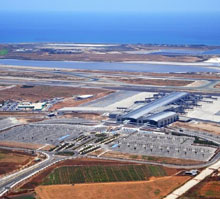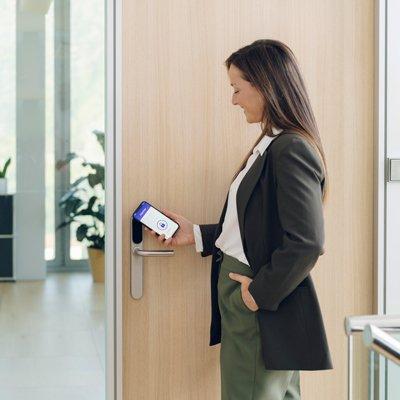 |
| Nedap AEOS enables the airports to be more in control of the enforcement of the tight security procedures |
Larnaka International Airport and Paphos International Airport are the two main airports of Cyprus, jointly processing well over seven million passengers per year and offering employment to more than 6000 people. With a total parking space of 20 aircrafts plus a special parking area for around 40 small propeller planes Larnaka is the bigger airport of the two; Paphos International Airport has a parking capacity for 14 aircrafts.
The status of Cyprus as a major tourist destination means that air traffic has steadily risen over the years, doubling the capacity the airports were initially designed for. For this reason, both airports are working hard to develop the infrastructure facilities further and increase their capacity. Paphos already has a new passenger terminal since November 2008 and at Larnaka constructions are ongoing to open the new passenger terminal in November of 2009, offering modern, world class facilities.
The rapidly changing and complex security environments of both airports have made the management decide to install a reliable and user-friendly security management system at both airports.
AEOS access control
One of the main reasons for the airports to choose Nedap AEOS as its security management system is the combination of its open architecture and configurable software components, enabling the airports to be more in control of the enforcement of the tight security procedures. Another important reason to choose AEOS is its capability of managing the access control at both airports simultaneously. The implementation took place through Glosec Holdings Ltd, the daughter company in Cyprus of Nedap's certified Business Partner Orad Ltd. from Israel.
The implemented AEOS security management system at Larnaka International Airport consists of approximately 88 Nedap proximity readers and 11,000 Mifare cards. At Paphos International Airport the AEOS system consists of approximately 28 Nedap proximity readers with 5000 Mifare cards. The project not only includes security management systems, but also CCTV, logical biometric log-in to computers and a central command and control system. With these systems in place, the airports will be able to meet present demands as well as future security requirements.
Intermediate server
 |
| Nedap's gate control centrally monitors the door settings and locally controls the gates |
The airports of Larnaka and Paphos function independently, but are managed and controlled by one company. Therefore, one of the requirements for the installation of the access control system was to have a combined arrangement for both sites. The airports now have their own access control server, but thanks to Nedap's Single Server Multi Site solution both servers will be connected through an intermediate server in the near future. The big advantage of this is that the data of both airports can be easily exchanged. If an access badge is blocked at one airport, it is automatically blocked at the other airport as well. Similarly, all actions taken at one airport can have direct consequences at the other airport.
Gate control
Gate control plays a crucial role at both airports. As at any other European airport, gate control is essential for monitoring the difference between Schengen and non-Schengen passengers. This is often still managed locally at the gate, where the staff member responsible for the gate has to personally check all the entrances each time an aircraft arrives or departs. In order to make absolutely sure that the various passenger flows follow different routes, Nedap has developed a gate control application that is derived from Nedap's security controller. This is the world s first controller that combines all security functions previously performed by separate dedicated systems in one generic device.
With Nedap's gate control, the gates are linked to a network that centrally monitors the door settings and locally controls the gates. To set the gate doors to the right position, the authorised staff member presents his badge, shows his finger print and enters a code (or flight number). This is all done locally at the gate. Given that the control system is linked to a network infrastructure, all the gate doors in the system can now be monitored online with one management platform. All actions performed at the gate locally show up as events in AEOS, making it possible to see, for example, if all doors have functioned well during a month. The use of a network infrastructure and gate controllers saves time and makes it possible to operate the gates more efficiently and with less personnel. The Cyprus airports are currently non-Schengen but with the Nedap gate control solution the system is ready for post-Schengen.
Nedap AEOS security management system combines open architecture and configurable software components |
Within the framework of the gate controller, gates can be linked to an HR database that contains the personal data and biometric characteristics of the airports staff. With this link the staff member's personal data are always current and directly available at the gate. With the module Photo Events photos and additional data are displayed in the event monitor of AEOS. It allows for the system user to check whether the person presenting his badge at an entrance is the same as the person whose picture is stored in the database.
For easy and quick identification, airport security at Larnaka and Paphos has also been equipped with a hand-held device to control access. Guards can ask staff anywhere at the airport to identify themselves with their badge and fingerprint. The hand-held device will show the security guard if the fingerprint is identical to the one on the person s access badge. At the same time, the person's photo and personal details will appear.

















